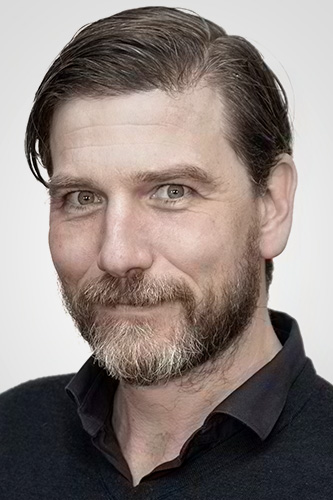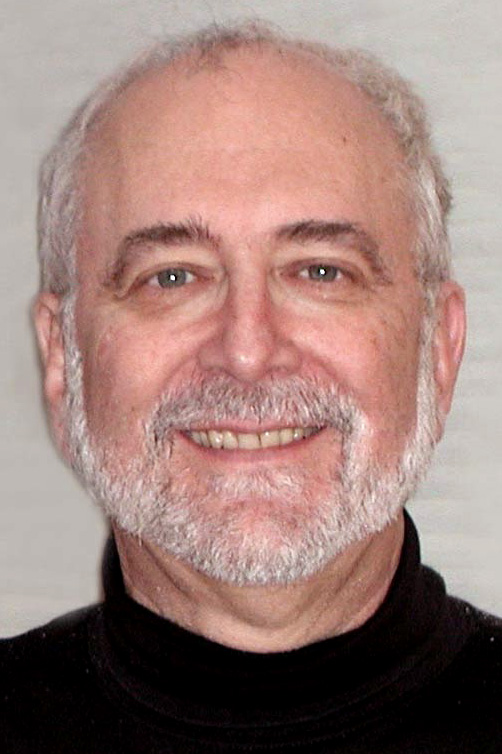

 On the sunny beaches of Anguilla -- a small island of just 35 square miles -- I'm sure artificial intelligence (AI) is the last thing people are thinking about. The primary industries of Anguilla, set in the Leeward islands in the Caribbean, are tourism and offshore banking. However, this nation has been assigned the country code top-level domain (ccTLD) .AI -- which is being repurposed to represent artificial intelligence. more
On the sunny beaches of Anguilla -- a small island of just 35 square miles -- I'm sure artificial intelligence (AI) is the last thing people are thinking about. The primary industries of Anguilla, set in the Leeward islands in the Caribbean, are tourism and offshore banking. However, this nation has been assigned the country code top-level domain (ccTLD) .AI -- which is being repurposed to represent artificial intelligence. more
 In 2019, two organisations - Public.Resource.org of Sebastopol, California, and the Right to Know GLC of Dublin - brought suit against the European Commission for violating the fundamental rights of citizens to access the standards they are required by law to know, and attempting to protect intellectual property by copyright which lacked originality because it was, inter alia, provided by public governmental and industry sources. more
In 2019, two organisations - Public.Resource.org of Sebastopol, California, and the Right to Know GLC of Dublin - brought suit against the European Commission for violating the fundamental rights of citizens to access the standards they are required by law to know, and attempting to protect intellectual property by copyright which lacked originality because it was, inter alia, provided by public governmental and industry sources. more
 In a previous post, I asked whether electronically steered antennas (ESAs) would replace parabolic antennas in satellite ground stations. I read a few articles suggested by others and by Google search, used some common sense, produced a list of advantages of ESAs, and concluded that it was likely they would eventually replace parabolic antennas for many applications. more
In a previous post, I asked whether electronically steered antennas (ESAs) would replace parabolic antennas in satellite ground stations. I read a few articles suggested by others and by Google search, used some common sense, produced a list of advantages of ESAs, and concluded that it was likely they would eventually replace parabolic antennas for many applications. more
 Fiber manufacturers are always trying to make it easier to deploy fiber. One of the most interesting trends is the increasing migration from 250-micron fiber to 200-micron fiber. For those not familiar with the metric system, a micron is one-thousands of a millimeter. A 250-micron fiber has a diameter of 0.25 millimeters, while a 200-micron fiber has a diameter of 0.2 millimeters. more
Fiber manufacturers are always trying to make it easier to deploy fiber. One of the most interesting trends is the increasing migration from 250-micron fiber to 200-micron fiber. For those not familiar with the metric system, a micron is one-thousands of a millimeter. A 250-micron fiber has a diameter of 0.25 millimeters, while a 200-micron fiber has a diameter of 0.2 millimeters. more
 The digital domain encompasses the different spaces and spheres we use to relate and interact with the people and things that surround us using digital technologies. The Universal Declaration of Human Rights, UDHR, as the globally accepted standard, should serve us as the guiding light when it comes to striking the delicate balance between our rights and responsibilities on and offline. more
The digital domain encompasses the different spaces and spheres we use to relate and interact with the people and things that surround us using digital technologies. The Universal Declaration of Human Rights, UDHR, as the globally accepted standard, should serve us as the guiding light when it comes to striking the delicate balance between our rights and responsibilities on and offline. more
 A significant segment of the IoT ecosystem, the Internet of Medical Things (IoMT), is projected to grow at a compounded annual growth rate of 23.7 percent (forecast period: 2022 -- 2032). This fast growth is indicative of how rapidly IoTM is integrating into modern society, which has understandably attracted the attention of regulators. The widespread use of IoTM devices means that their malfunction or dysfunction can affect the health and lives of many. more
A significant segment of the IoT ecosystem, the Internet of Medical Things (IoMT), is projected to grow at a compounded annual growth rate of 23.7 percent (forecast period: 2022 -- 2032). This fast growth is indicative of how rapidly IoTM is integrating into modern society, which has understandably attracted the attention of regulators. The widespread use of IoTM devices means that their malfunction or dysfunction can affect the health and lives of many. more
 For a long time, arguments about the meaning of "DNS Abuse" prevented fruitful discussions within the ICANN community on when and how it is appropriate to act at the level of the DNS to address abuses online. The proposed amendments to RA and RAA agreements represent a significant and welcomed step in the right direction. As Secretariat of the Internet & Jurisdiction Policy Network (I&JPN), we strongly encourage their adoption... more
For a long time, arguments about the meaning of "DNS Abuse" prevented fruitful discussions within the ICANN community on when and how it is appropriate to act at the level of the DNS to address abuses online. The proposed amendments to RA and RAA agreements represent a significant and welcomed step in the right direction. As Secretariat of the Internet & Jurisdiction Policy Network (I&JPN), we strongly encourage their adoption... more
 OpenXDR is one of the most cost-effective SIEM alternatives that help businesses detect and mitigate threats within hectic modern architectures. A single cyber incident impacts every aspect of a business -- from system downtime, revenue losses, and reputation damage to disrupted operations. more
OpenXDR is one of the most cost-effective SIEM alternatives that help businesses detect and mitigate threats within hectic modern architectures. A single cyber incident impacts every aspect of a business -- from system downtime, revenue losses, and reputation damage to disrupted operations. more
 Today the DNS Abuse Institute (“DNSAI” or the “ Institute”) adds a new level of reporting for our measurement project: DNSAI Compass™ (“Compass”). With this new level of reporting, we intend to show the spectrum of how malicious phishing and malware is distributed across the DNS registration ecosystem.1 To demonstrate this, we are identifying registrars and TLDs with high and low volumes of malicious domain registrations in their Domains Under Management (DUM), or new registrations. more
Today the DNS Abuse Institute (“DNSAI” or the “ Institute”) adds a new level of reporting for our measurement project: DNSAI Compass™ (“Compass”). With this new level of reporting, we intend to show the spectrum of how malicious phishing and malware is distributed across the DNS registration ecosystem.1 To demonstrate this, we are identifying registrars and TLDs with high and low volumes of malicious domain registrations in their Domains Under Management (DUM), or new registrations. more
 In 2014, computer scientist Gavin Wood coined the term "Web 3.0." The phrase, which has now been shortened to "Web3", refers to the third generation of the internet that's designed to be truly decentralised and free from a central authority. Web3 has the potential to add real-world value for businesses by creating additional avenues to reach consumers. However, owing to its less regulated nature, brands also have the potential to be taken advantage of both by users and by the providers in the space. more
In 2014, computer scientist Gavin Wood coined the term "Web 3.0." The phrase, which has now been shortened to "Web3", refers to the third generation of the internet that's designed to be truly decentralised and free from a central authority. Web3 has the potential to add real-world value for businesses by creating additional avenues to reach consumers. However, owing to its less regulated nature, brands also have the potential to be taken advantage of both by users and by the providers in the space. more
 The Canadian International Pharmacy Association (CIPA) recently achieved a major milestone: We celebrated our 20-year anniversary, serving millions of customers around the world who otherwise would not afford, access or trust ordering their daily maintenance medications where they live. Founded in 2002 by a group of Canadian pharmacists who recognized the potential of the Internet to provide safe and affordable access to medications... more
The Canadian International Pharmacy Association (CIPA) recently achieved a major milestone: We celebrated our 20-year anniversary, serving millions of customers around the world who otherwise would not afford, access or trust ordering their daily maintenance medications where they live. Founded in 2002 by a group of Canadian pharmacists who recognized the potential of the Internet to provide safe and affordable access to medications... more
 Three recent developments make me wonder whether we are on the cusp of a shift in satellite ground station technology from parabolic to electronically steered antennas (ESAs). The U.S. Space Force operates the Satellite Control Network, with 19 parabolic antennas at seven locations around the world. more
Three recent developments make me wonder whether we are on the cusp of a shift in satellite ground station technology from parabolic to electronically steered antennas (ESAs). The U.S. Space Force operates the Satellite Control Network, with 19 parabolic antennas at seven locations around the world. more
 The idea for Ethernet was born fifty years ago in May 1973 when Robert Metcalf coined the word Ethernet. He had been studying ALOHAnet, developed at the University of Hawaii in 1971 and was the first public demonstration of a wireless packet data network. Metcalf used the work Ethernet as a reference to luminiferous aether, a concept postulated in the 17th century to explain how light could be transmitted through a vacuum. more
The idea for Ethernet was born fifty years ago in May 1973 when Robert Metcalf coined the word Ethernet. He had been studying ALOHAnet, developed at the University of Hawaii in 1971 and was the first public demonstration of a wireless packet data network. Metcalf used the work Ethernet as a reference to luminiferous aether, a concept postulated in the 17th century to explain how light could be transmitted through a vacuum. more
 In today's world, it has become axiomatic that drastic change can occur overnight. One of those cherished concepts at risk is the idea of "One World – One Internet." In the wake of the war in Ukraine, the geopolitical tensions on the existing Internet have increased. If the "One Internet" will survive the 2020s is increasingly an open question, as good, bad, and not-very-helpful intentions strive to pull it apart. more
In today's world, it has become axiomatic that drastic change can occur overnight. One of those cherished concepts at risk is the idea of "One World – One Internet." In the wake of the war in Ukraine, the geopolitical tensions on the existing Internet have increased. If the "One Internet" will survive the 2020s is increasingly an open question, as good, bad, and not-very-helpful intentions strive to pull it apart. more
 It wasn't that long ago that we saw a major update to WiFi standards with the release of WiFi 6 in 2019 and WiFi 6E in 2020. But we're on the verge of the next generation of WiFi with the official launch of the new WiFi 7 standard in November 2022. There has already been a soft release of WiFi 7 routers in China, and we'll start seeing the new routers in the market here sometime this year. more
It wasn't that long ago that we saw a major update to WiFi standards with the release of WiFi 6 in 2019 and WiFi 6E in 2020. But we're on the verge of the next generation of WiFi with the official launch of the new WiFi 7 standard in November 2022. There has already been a soft release of WiFi 7 routers in China, and we'll start seeing the new routers in the market here sometime this year. more
Sponsored byRadix

Sponsored byVerisign

Sponsored byWhoisXML API

Sponsored byDNIB.com

Sponsored byIPv4.Global

Sponsored byVerisign

Sponsored byCSC
